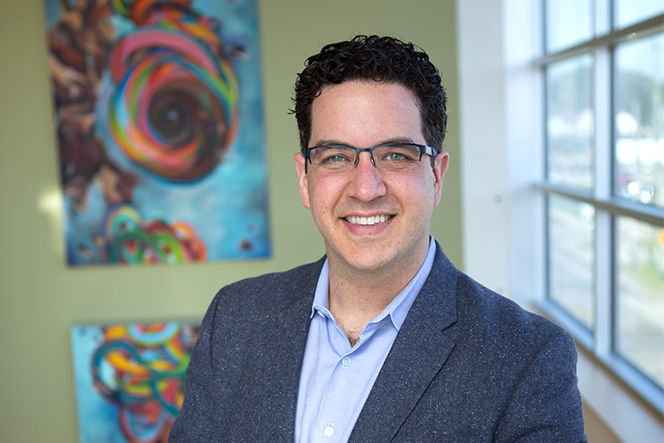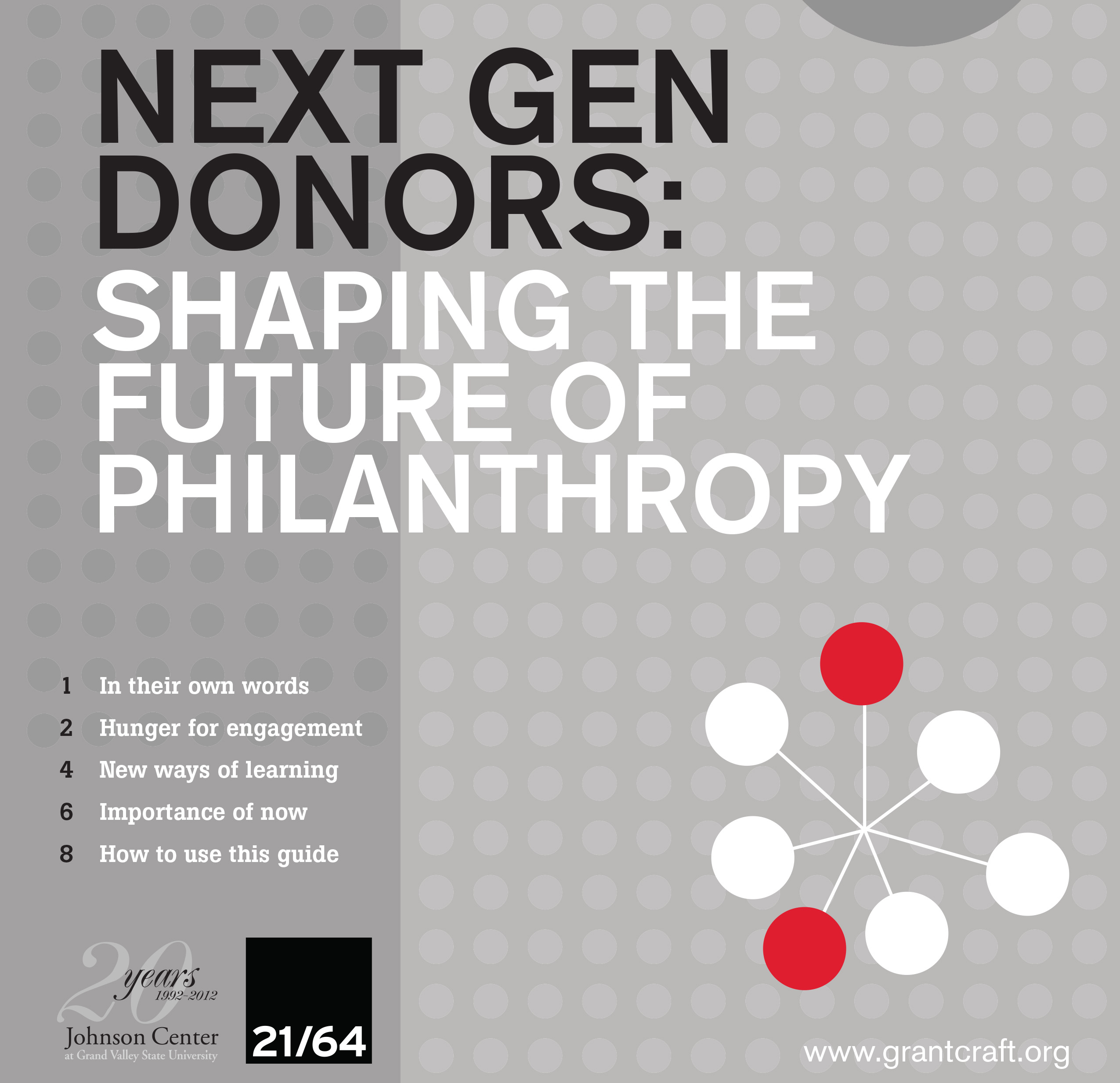Sparking Conversations about Next Gen Donors
GrantCraft joined 21/64 and the Johnson Center for Philanthropy in listening to and reflecting upon the voices of a group of U.S. major donors in their 20s and 30s. This important new research can be found at www.nextgendonors.org. Next Gen Donors: Shaping the Future of Philanthropy, a GrantCraft companion guide to the larger study, captures what Gen X and Millennial philanthropists find distinctive about themselves and their peers. In this guest blog, Jason Franklin comments on what he learned from the research.
I’ve been exploring the issues facing “next gen” donors for over a decade, ever since I began getting involved in philanthropy after discovering as a 22-year old graduate student that my family had a small foundation. That’s why I was so happy when Sharna Goldseker from 21/64 and Michael Moody from the Johnson Center approached me as they were beginning research for what has become the Next Gen Donors: Respecting Legacy, Revolutionizing Philanthropy study and the GrantCraft companion guide, Next Gen Donors: Shaping the Future of Philanthropy. It was my pleasure to be interviewed for the study as a next gen donor and to help them reach out to other young donors through Bolder Giving, the donor education nonprofit I lead.
Over the years, I’ve given dozens of talks and been part of many  panels talking about next gen donors. But almost everything I’ve drawn on has been from my experience and others in the networks I’ve been a part of including Resource Generation, the Threshold Foundation, and the Council on Foundations. I couldn’t agree more with this new study’s observation about how “little previous research [is available] on the powerful but very private group of young people who stand to become the major donors of the future.” As I read this research study and GrantCraft guide, I found myself nodding regularly in agreement with their findings and also occasionally noticing points of departure from my experiences. With 310 survey respondents and 30 interviews, the study sample included participation by Gen Xers and Millennials more diverse than those in my personal circle.
panels talking about next gen donors. But almost everything I’ve drawn on has been from my experience and others in the networks I’ve been a part of including Resource Generation, the Threshold Foundation, and the Council on Foundations. I couldn’t agree more with this new study’s observation about how “little previous research [is available] on the powerful but very private group of young people who stand to become the major donors of the future.” As I read this research study and GrantCraft guide, I found myself nodding regularly in agreement with their findings and also occasionally noticing points of departure from my experiences. With 310 survey respondents and 30 interviews, the study sample included participation by Gen Xers and Millennials more diverse than those in my personal circle.
One piece in particular that jumped out at me was the issue priorities of my peers. I was not surprised to see animal welfare, the environment, civil rights, and advocacy identified as “emergent issues” among my generation. But I admit to being a bit surprised—probably the result of hanging out in more political and change-focused groups—to see youth/family, education, and basic needs so highly rated as shared issues with our parents and grandparents. This was a valuable reminder personally that as a generation writ large we are perhaps not as different from our parents as I often think.
This research also confirmed my sense that arts and culture, religious, health, and “combination” organizations (such as United Ways and Jewish federations) need to pay special attention to engaging next gen donors now or face the prospect of an aging and shrinking donor base. While I expect that some of these issues may see more attention from my generation as we grow older and have more time for the arts, face more health issues ourselves, and refocus on religion as we start raising children, these are major shifts that nonprofit leaders should pay attention to now.
 Another area that struck me was variation in how next gen donors give. This study offers evidence that the messages of “philanthropic best practice” are spreading among Gen Xers and Millennials. Based on next gen donors’ self-reported “most important components” of philanthropic strategy, the elements at the top of the list “fit well with the model of ‘strategic philanthropy’ that has emerged in the field of giving and grantmaking over the last few decades.”
Another area that struck me was variation in how next gen donors give. This study offers evidence that the messages of “philanthropic best practice” are spreading among Gen Xers and Millennials. Based on next gen donors’ self-reported “most important components” of philanthropic strategy, the elements at the top of the list “fit well with the model of ‘strategic philanthropy’ that has emerged in the field of giving and grantmaking over the last few decades.”
Strategic donors who do research, focus on impact, and share information need to be approached for support in different ways, and they expect different things as a result of their gifts. Just this morning I was talking with an executive director of an organization I support, and she stopped me at one point to say, “you’re so different from most of my major donors—you want to talk about impact, not acknowledgement.” I don’t think this is so much a flattering comment about my giving but a sign of a generational difference that I share with my peers. We now give and will continue to give in different ways, and we look for different things in the organizations we support.
There is much more to be gleaned from this important new research that has major implications for the future: how we add “ties” to the traditional litany of “time, talent, and treasure” contributions; how we are integrating the facets of our lives differently; how we use online sources of information and social media to inform our giving; and how our reliance on a single trusted advisor is declining. And there is so much that those of us who are young major donors can learn about ourselves by reflecting on what our peers shared. I can imagine many conversations among philanthropic leaders, wealth managers, philanthropy advisors, nonprofit executive directors, and fundraisers that will be sparked by this research. The GrantCraft companion piece includes starter questions for these audiences and others interested in the priorities, strategies, and activities of next gen donors. Let the reflections and conversations begin!


